Public baths are an integral part of life in Morocco. On any given day you might see a group of women gathering outside the neighborhood hammam, a small plastic stool and bucket in hand. The hammams in Morocco come with their own set of unspoken rules, which for outsiders can be more than a little confusing. Here are a few tips to help you be ready for your own Moroccan hammam experience.
There are numerous upscale, private and intimate spa experiences to be had in every major city and many boutique riads and hotels in the country. These are a bit of a hybrid of the traditional Moroccan public bath, or “hammam,” and are generally a more contemporary, bespoke spa experience. These more upscale hammam experiences are wonderful, particularly for couples… or those who don’t feel comfortable mingling with strangers.
If you are traveling with us, chances are that you are going to have more than one opportunities to experience a lovely private hammam. This is something that would be traditionally done in more upscale households throughout Morocco over the ages. This is a private, intimate experience that generally involves a thorough exfoliating scrub down by a local woman with a rough glove, traditional olive-based natural soap, as well as a ghassoul (clay) treatment. Nearly always massages are also available to complete the pampering.
That said, one of the more adventurous and immersive ways to come clean for the culturally inquisitive is to head to a local hammam and experience a traditional public bath. This is much less a private, intimate experience than it is a social experience where people talk and gossip all while having a great scrub. Our friend Amanda Mouttaki, an American living in Morocco, wrote about her first experience in a public Moroccan hammam as she was getting to know her husband’s family. Amanda’s story is one of many featured in our story collection, Our Morocco: Moroccans and Expats Share Their Lives, Hopes, Dreams, and Adventures. Check it out here: https://www.journeybeyondtravel.com/our-morocco.
As Amanda discovered, stepping into and stripping down in a hammam is something of a disarming experience for many of us. A little inside knowledge will make the whole experience more relaxing – which is ultimately what it is all about!
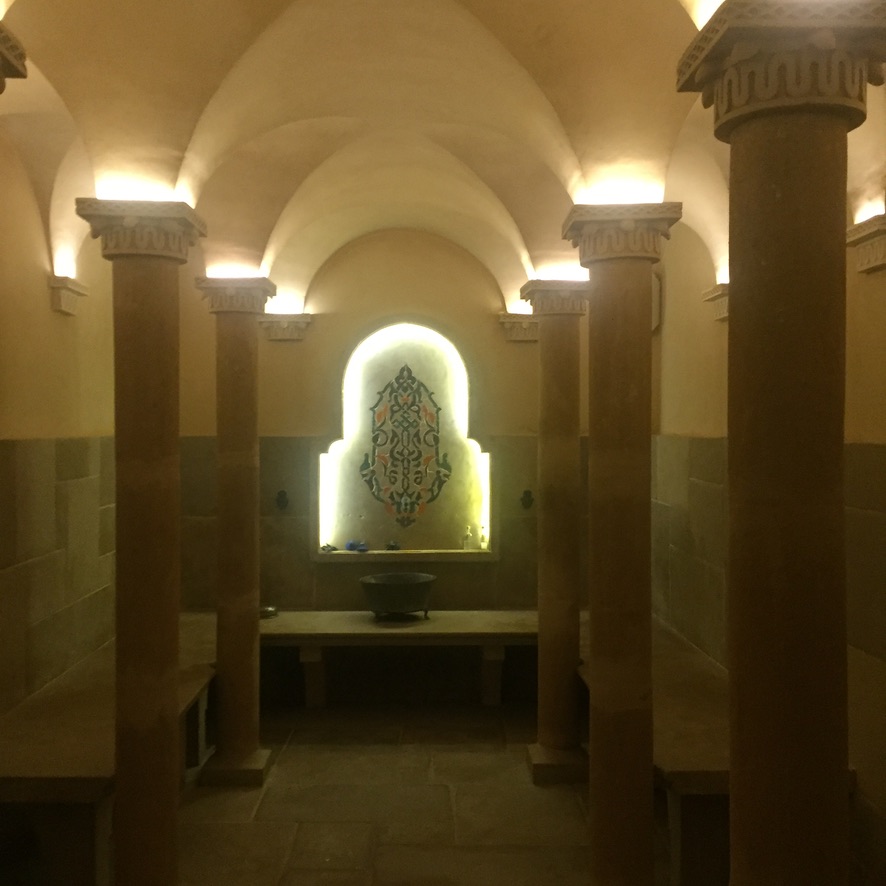
The traditional hammam is about community and cleanliness rather than a zen-inspired indulgence. It is essentially a practical event, and one that should leave you invigorated, exfoliated and squeaky clean. For just a few dirhams, you can take part in the bathing ritual and be part of a real cultural – and social – experience.
These local neighborhood hammams of Morocco are always inexpensive (generally around 10-20 Dirhams/$1-2 for entry plus about 50 Dirhams for exfoliation by an attendant) and cater to the local population. Many Moroccans will visit their local hammam once a week. You can still find hammams spread throughout the old medinas of every major city in the country, with more modern versions of the originals scattered with regularity in the more recently built parts of the city.
Your Moroccan Public Hammam Essential Checklist
Before you even enter a public hammam you’ll need to do a bit of shopping. Hammams are a BYO-soap affair, and most of the essentials can be picked up in the little corner shops around the old medinas in every major city. Many items are sold in single-use packs, though I recommend buying in bulk whenever possible to cut down on plastic packaging. I’ve put together a full checklist of what you’ll need in this post. For the sake of giving you a handy preview of your shopping list, you’ll basically need a bucket, a cup, a mat, a towel, a kees, black soap, ghassoul clay, fresh clothes, flip-flops, an orange (yes! you read that right!), and a few more things.
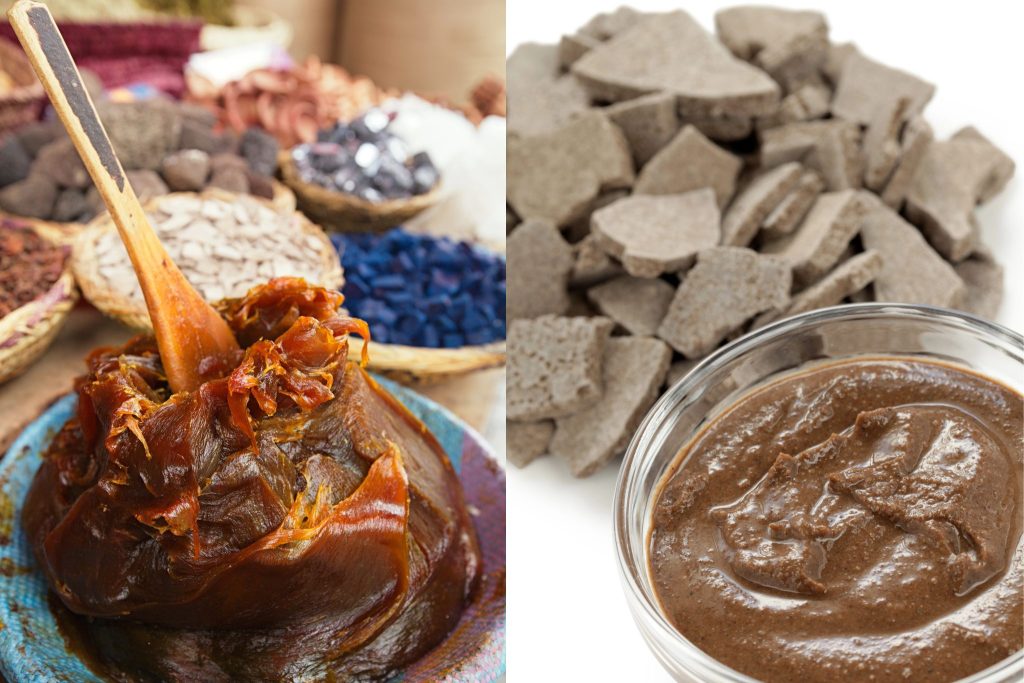
Your Moroccan Hammam Guide: How To Hammam
Shopping done, bucket and black soap in hand, and possibly feeling a little self-conscious, what’s next?
First things first – make sure you have your times right! While some hammams are exclusively for men or women, in most cases there are certain times of the day allocated to each. Make sure to check for your time before you sashay in and cause a stir! As a stranger and a foreigner in a local neighborhood hammam, you will stand out and you will be guided through the steps and told what to do and when to do it. There is a real sense of community, even sisterhood/brotherhood, in the hammams. The best advice really is to relax and go with the proverbial flow.
The typical hammam consists of four rooms: changing room, cool room, warm room, and hot room. Usually there will be someone on hand – an attendant – in the changing room to lead you through the hammam ritual: soaping, rinsing, exfoliating, clay-masking.
Before you first enter the steamy confines of the hammam, you will strip down to your bathing suit or underwear and put your belongings (towels, clothes, rose water, wallet, purse) in a cubicle in the changing room. Most Moroccans don’t strip all the way down. They’ll leave their underwear bottoms on. When they get really into the scrubbing, some women do strip down to get a final rinse. But do what feels comfortable to you. Men are expected to keep on a pair of underwear or a swimsuit to cover their genitals too.
After the changing area, you’ll take your bucket, mat and/or stool, cup, pouch full of cleaning essentials, and enter into the cool room. The innermost room is where the hottest water flows onto a large basin. Find an open space in one of the rooms to lay your mat and… set camp. The basic idea is to gradually increase the temperature of the air and water as you go from room to room while washing using your bucket and cup. You can sit in the middle room first to get a bit warmer until you are ready to get started.
In the meantime, fill your water bucket. The attendants inside the hammam will help you fill the water from the basin and provide buckets for you to mix until the water is just as hot as you like. Once ready, douse yourself in hot water. Either stick to the middle room, or if your body can take it, head into the hot room. Many people skip this progression from cool-to-hot all the way and go directly to the hot room and do everything there while they breath in the steam.When your body is nice and warm, you can start working the black soap all over it.
Let your skin soak in the black soap and relax for a few minutes. Then rinse the soap off really well with hot water, and get prepared for some exfoliation. Grab your kees (glove) and start working in circular movements. If you want to be systematic and thorough, scrub each part of your body completely before you move to the next one. I like to start top-down, going from the neck, shoulders, arms, chest and belly, back, then backside and legs.
For your back, one of the attendants can always help. They will vigorously (if not somewhat violently) rub you down for a small charge of 40-50 Dirhams. You can ask them to tame the rubbing to your level of tolerance. Most locals opt to do everything themselves, usually going with a friend or family member to have a chat and get a hand for those hard-to-reach places. If it is your first time, it is probably easiest to pay a little extra for someone to rub you all the way down as they will guide you through the process. You might also be asked to rub a stranger’s back with a kees. This is all part of the experience and is to be expected. In any case, a lot of little clumpy grey flakes (resembling eraser shavings) will come out of your skin when you exfoliate. These are a combination of dead skin cells, dirt and oils that would have accumulated on your skin. They soften and come out with the steam, warm water, and exfoliation.
If you have someone to do the rub down and exfoliation with the kees glove, prepare yourself for the odd unexpected bucket of water thrown over you towards the end… when you least expect it!
Once rinsed off your dead skin, move on to the next step of detoxification and deep cleansing. If you bought your ghassoul in dry form, use your little cup or bowl to mix it with warm water (some like to mix it with rose water) to create a paste. Apply the paste to your face and body. If you mix it with a few drops of argan oil, you can also use it on your hair as a natural shampoo. It’s cleansing and gives volume. You just have to rinse thoroughly. Leave the ghassoul on for about 15 minutes then rinse off.
You’re basically done now! At this point, you can add a step where you use your regular shampoo, conditioner, shower gel and rinse off.
Start rinsing off your belonging and packing up. Move gradually into the cooler room and ask one of the attendants to bring you your towel. While waiting, and if you’re brave enough, do a last rinse with cold water. It will help you bring your body temperature down and will tone you up. Wrap yourself in your towel and head to the changing room to dry off and get dressed.
In the changing room, you’ll often see people lingering long after their hammam is done — sitting together, chatting, and catching up on the latest news. It’s a lively space where gossip flows as freely as laughter, where friends exchange stories, neighbors share advice, and strangers can strike up conversations as if they’ve known each other forever. More than just a place to get dressed, it becomes a little social salon, a continuation of the hammam ritual of connection and community.
Now this is where that orange comes into play. This is your refreshment. While not an “official” step, the orange is both a reward and a way to restore your energy after completing the ritual. Let it rest in cool water as you pause, breathe, and let your body settle. Peel and enjoy your snack before slipping into fresh clothes and stepping back into the world renewed.
A Little Hammam Etiquette
It is quite acceptable to take a moment to rinse off your floor space before laying your mat and starting your bathing ritual.
Unless you’re the only person there, it is usually considered bad form to take more than two buckets of hot water. Likewise, the floors of a hammam are all sloped toward a central drain. Take a moment to make sure that 1) your rinse water isn’t going to flow into anyone else’s wash area, and 2) you are not sitting at the lower end of the slope.
When pouring water on yourself, be mindful of not splashing too much those who are next to you.
Before leaving your spot and heading to the changing room, give your area a last rinse off. Return any buckets you may have borrowed.
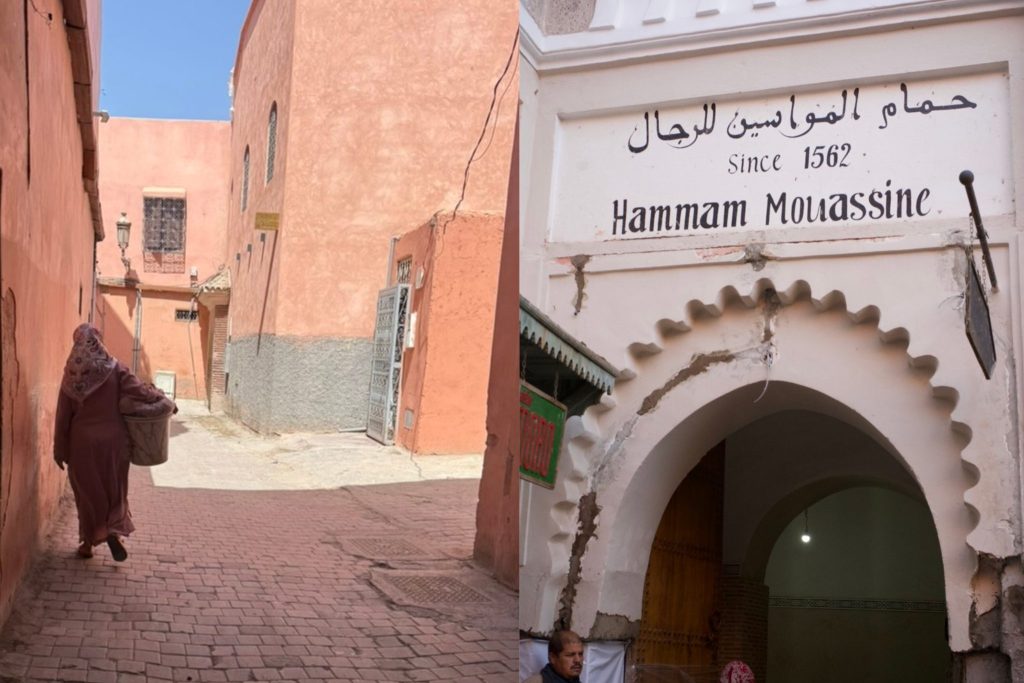
Heading Home from the Hammam
When you head out, you’ll probably hear the words ‘BessaHa!’ more than a few times. Moroccans say this to anyone who has just come from a bath, and it translates roughly as ‘to your health.’ Reply with a smile and a ‘Allah ya’tik saHa,’ which means ‘and yours as well.’
The hammam in Morocco is a warm and welcoming space where women – and men – take time for ritual and conversation across the generations. Particularly for women, this is one of the richest, not to mention cleanest, experiences you can have in Morocco.
So, don’t be shy! Dive in, get warmed up, scrub off a layer of skin, and maybe even make a new friend.
BessaHa!
About the Author

Amina Lahbabi is a proud Moroccan, feminist, mother, climate change activist, and promoter of education, equal rights and freedom of expression. She is at the forefront of all of Journey Beyond Travel’s NGO initiatives. She loves art, freedom of expression, and is an accomplished photographer in her own right. She holds multiple graduate degrees in translation and communication and was a Fulbright Scholar at Michigan State University. She also loves a good hammam. She lives in Tangier. You can check out her Wikipedia.


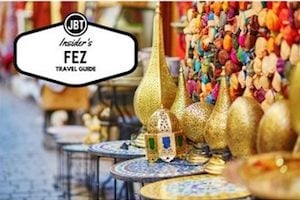





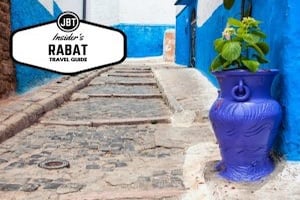
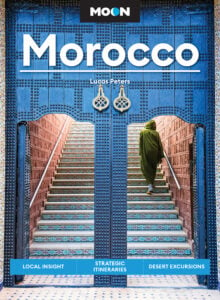
I would not recommend getting taking your underwear off in Hammam if you’re a guy! Otherwise, nicely written.
Among the parts of any medina of Morocco is the Hammam, I really recommend travelers to go for this amazing experience!